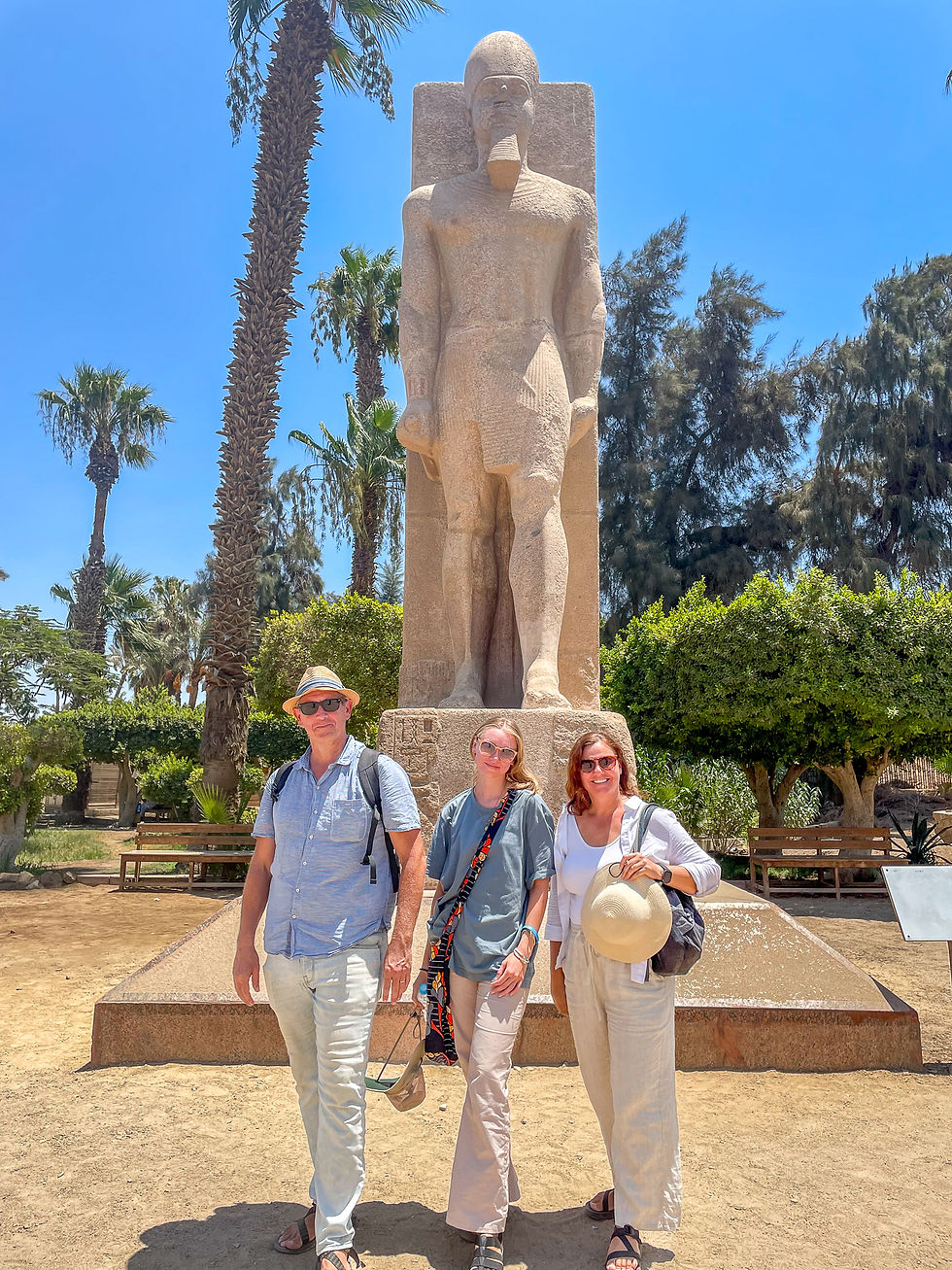How the Pharaohs Invented Your Selfie Stance: Contrapposto in Egyptian Sculpture
- Rand Blimes

- Jun 3, 2025
- 2 min read
Updated: Jun 5, 2025

You’ve seen the pose a thousand times. On Instagram. In magazines. In your own vacation photos. One foot forward, hip cocked slightly, torso proud and upright, maybe one hand resting on the waist like you’ve just finished conquering something.
Congratulations: you’ve just struck a pose that changed art history.
It’s called contrapposto, and it marks one of humanity’s most important artistic breakthroughs. By shifting the body’s weight subtly onto one leg, artists found a way to make stone breathe. The stiff symmetry of earlier statues gave way to a suggestion of movement—of life held in tension. In the history of sculpture, there is a before contrapposto, and there is an after.
Most people associate this innovation with Classical Greece. Think Praxiteles. Think Polykleitos. Think the Laocoön and Michelangelo’s David. That’s the fully realized form, yes. But the spark? The first flicker of this fire? It lit in ancient Egypt.
Take a walk through Luxor Temple and look at the colossi in the Great Court of Ramesses II (pictured above). The statues stand in the ancient Egyptian stance—one foot placed forward, arms pinned at their sides, torso upright, facing the eternal. It may seem rigid compared to what came later, but this tiny shift in weight distribution broke the stillness of millennia. The Egyptians didn’t just build temples and tombs—they gave the future of art its footing. Literally.
The pose conveyed action and stability, life and permanence. It declared, “I am walking into eternity.” And because these statues walked, later art could run.
And today, in the very halls where these statues rise skyward, what do we see? Tourists in linen pants and tank tops, snapping selfies in front of Ramesses or Amenhotep—standing just so. One leg forward. One hand on a hip. That instinctive lean, that subtle S-curve.

Contrapposto, baby. Alive and well in the age of Instagram.
We couldn’t resist either. When we visited Memphis, we found a towering statue of Ramesses II and, of course, struck our best dynasty-worthy poses in front of it. We may not have the posture of a pharaoh or the abs of a god, but we’ve got contrapposto down cold.
So next time you scroll through vacation pics—yours or someone else’s—and see that signature stance, take a moment. Remember that you’re looking at a living echo of an artistic revolution that began 3,000 years ago on the banks of the Nile.
And give a little nod to the Egyptians. They taught us how to stand.
They made stone shift its weight.
They gave us art that breathes.
And somehow, all these centuries later, we’re still posing—still playing pharaoh in our sandals and sunglasses—because travel lets us step, however briefly, into the eternal.



Comments